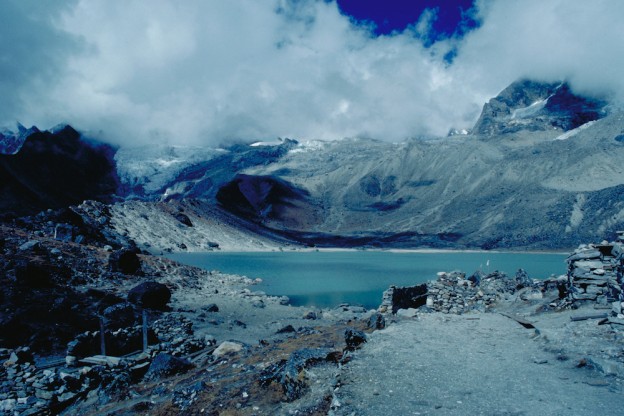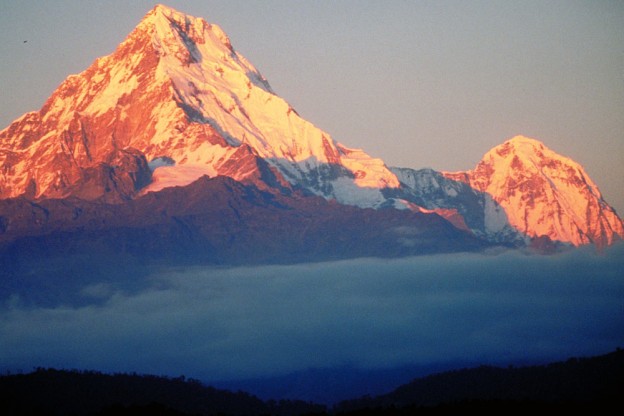The earthquake that struck Nepal over the weekend, killing more than 5,000 people and injuring more than 10,000, reminds us that anything can happen anytime anywhere, including in destinations that top many people’s bucket lists. While it’s impossible to be fully prepared when a natural disaster, terrorist attack, or civil unrest disrupts a trip, there are some relatively quick and easy things that a traveler can do to be better prepared for any emergency, especially in remote places:
Before Your Trip
* Enroll in STEP.
Signing up for the State Department’s Smart Traveler Enrollment Program makes it easier for the U.S. embassy to send you important information about safety conditions, contact you in an emergency, and help family and friends get in touch with you.
* Rent a satellite phone or satellite messaging device.
“Bringing communications devices with additional batteries is the single most important thing travelers can do and often overlook,” says Dan Richards, CEO of Global Rescue, the worldwide provider of emergency medical, security, and crisis response services. When a crisis strikes, cellular networks and electricity often get cut off. You can’t rely on your cell phone, says Richards—and, even if you’ve brought a portable Wi-Fi hot spot with you, it can suffer the same problem as cell phones: limited or no bandwidth. The good news is that satellite communication devices have dropped dramatically in price in recent years. Richards recommends the Iridium GO! satellite text device (an Iridium phone is even better) or Briartek’s Cerberus.
* Book through the right destination specialist.
The Nepal travel specialist on my WOW List of top travel planners, Antonia Neubauer of Myths and Mountains, had guests in Nepal during the quake on Saturday and managed to get them safely onto a Sunday flight to New Delhi. The best destination specialists have access to key people in-country who will take care of you, can contact your relatives back home on your behalf, can intervene on your behalf with your travel insurance provider, etc. If you are on your own in a remote place, it is infinitely more difficult to cope.
* Get a Global Rescue membership.
This is the closest thing I know to ensuring you will be rescued in an emergency. Since Saturday, when the quake struck, Global Rescue has been providing intelligence to travelers in Nepal and coordinating evacuations to extract people to safety. “Many travel insurance companies really do not do an adequate job with emergency evacuation,” says Neubauer. “Many focus on releases or forms before they will authorize evacuations.” In fact, some medical evacuation insurance policies do not even cover natural disasters (so it’s important to check before purchasing a policy). But Global Rescue typically performs dozens of helicopter evacuations in the Himalaya alone each year, and it regularly sends critical-care paramedics and special ops personnel around the world to respond to members facing emergencies. A Global Rescue membership also gives you access to the Global Rescue mobile app, which keeps you apprised of local developments.
* Know where the best hospitals are.
Another Asia travel specialist on my WOW List, Sanjay Saxena of Destination Himalaya, points out that it’s important to know which are the best hospitals, not just in the capital city—which could be hours away from where you are when a crisis strikes—but in other cities too. Of course, it’s difficult for an independent traveler to get such information. Saxena has compiled his own list of reliable local hospitals, based on his years of experience working in the region (he’s been working in India since 1977 and in Nepal since 1978)—and that list is always evolving. If you’re not going to book your trip through a stellar destination specialist, it’s even more important to have a Global Rescue membership, or a travel insurance provider, who will know the best hospitals and be willing and able to get you there.
* Pack a medical kit.
Bring a prescription antibiotic and prescription pain reliever that you know work for you, in case you end up needing to be your own doctor. Bring iodine tablets to purify dirty water too, since, in an emergency, bottled water supplies quickly run out. “Water will quickly become one of the most dire issues in Nepal,” warns Saxena.
During Your Trip
* Carry a photocopy of your passport photo page and any visas.
Keep it on your person during the trip, in case the original is back at your hotel (usually the smartest place to keep it) or gets lost in the emergency.
* If you don’t or can’t bring a satellite phone, rent or buy a local mobile phone.
In some countries, including India and China, satellite phones are illegal. Destination Himalaya gives its travelers a local mobile phone pre-programmed with numbers for local staff, hotels, emergency services, etc. “Our in-country and U.S. staff are available 24/7,” says Saxena, “If there is a problem, we typically send a local staff member directly to our clients as soon as we’ve been alerted.”
* Create an emergency contact sheet.
If you plan to rely on your own cell phone, remember that 911 does not work outside the U.S. and Canada. Find out the local emergency numbers for the country you’re in.
* Plot on a paper map where the local embassy, consulate, and best hospitals are.
In an emergency you won’t want to rely on your smartphone or Google Maps app to get you there; you’ll want to save your battery for calls to loved ones, doctors, etc.
* Follow the right twitter feeds.
Twitter gives you breaking news and can provide potentially life-saving information in an emergency. Follow the U.S. embassy feed in the country you’re visiting (@USEmbassyNepal is distributing advice such as the local phone numbers to call for help), as well as the U.S. State Department’s feed, @travelgov. Such feeds are often the quickest way to find links to the info you’re seeking. The @RedCross and Google’s Crisis Response Team, @GoogleCR, are also worth following, as are the local airport’s feed, which may post updates about airport delays and shutdowns, and the feeds of local hotels, which usually have an emergency action plan and may be offering help or a landline.
* Know that Google offers a person finder.
In natural and humanitarian disasters, Google helps track missing persons.
If You Have a Trip Booked to the Area Soon
* Realize that the geographic area affected is limited.
So often, when a crisis strikes a country, U.S. travelers unnecessarily cancel trips to a huge swath of the world surrounding that country. They avoid regions that have not been affected in the least—which would be like Europeans deciding against a trip to New York because there was an earthquake in San Francisco or a terrorist attack at the Boston Marathon. The Nepal earthquake is not a reason to cancel a trip to unaffected regions of India or Tibet, says Global Rescue’s Richards. In fact, Saxena of Destination Himalaya is on a plane to Tibet at this very moment. We’ll keep you posted as to what he reports from the ground. He says it’s quite possible that he may even change plans and head to Kathmandu to help efforts there.
Here, our hearts go out to the people of Nepal as they cope with this catastrophe. “I have traveled many places,” says Neubauer of Myths and Mountains, “but the people of Nepal stand out. A family in a mud hut with nothing will share their rice with you and give you their mats to sleep on. Sherpas will risk their lives on mountains to save yours. There is a warmth and willingness to take a stranger into their home and heart that exists in few places. Travelers often say they go to Nepal for the mountains, but they return for the people.” Here are some good ways to help those people in their time of need.







